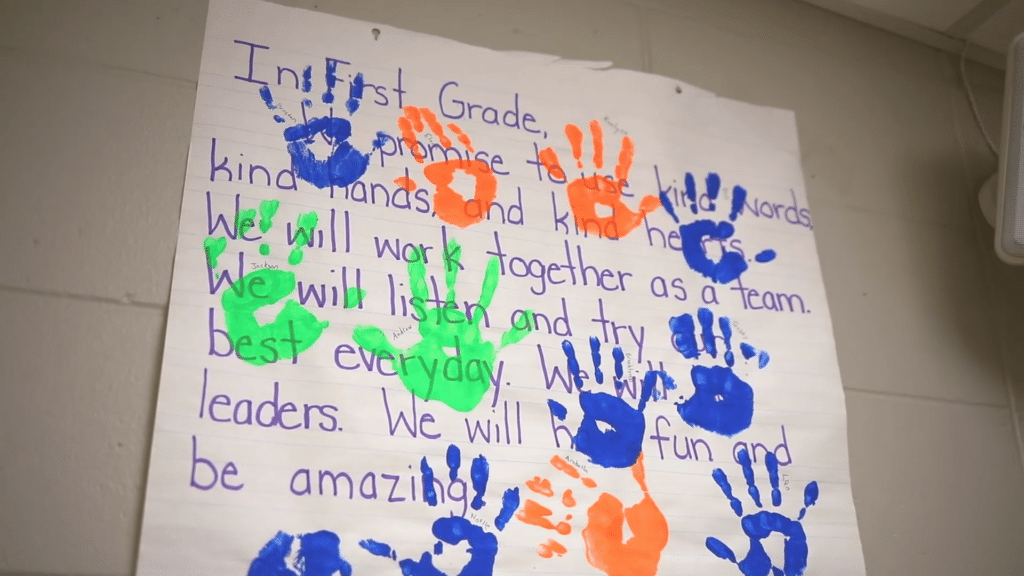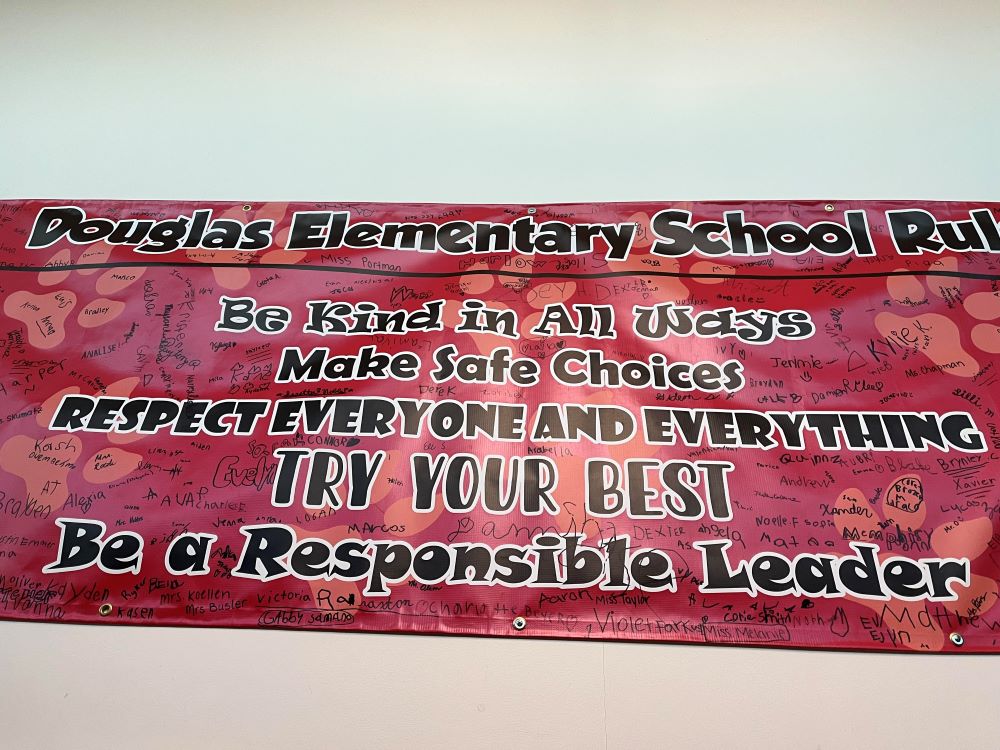
Location: Watertown, WI
Type of school: Public elementary school
Grade levels: Early childhood through fifth grade
Number of students: 315
A Responsive Classroom school since: 2018
Douglas Elementary is a public school in a rural part of Wisconsin that serves a diverse population of students, about half of whom qualify for free or reduced lunch. Their adoption of the Responsive Classroom approach started in 2018 with a voluntary book study of The First Six Weeks of School. About twenty educators participated.
The next year, based on the success of the book study, Principal Emily Lessner created a plan for implementing Morning Meeting schoolwide. She purchased copies of The First Six Weeks of School for every teacher, scheduled twenty-five minutes at the start of each day for classrooms to hold Morning Meeting, and set aside time during staff meetings to model and discuss the practice.
Since then, educators at Douglas have taken both the Elementary Core Course and, more recently, the Elementary Advanced Course. Lessner has also put together a leadership team to support her staff as they have worked to implement the practices and strategies they learned during these two four-day courses. This leadership team pinpointed six core strategies to focus on, including teacher language and logical consequences, along with Morning Meeting.
Throughout this process of growth, one of the driving forces behind their success is their willingness to let every member of the learning community—students and teachers alike—have a voice in what that learning community looks like. Here are some examples that highlight how Douglas Elementary makes sure every voice is heard.
At the beginning of the 2020–21 school year, Douglas had students fill out student engagement surveys, and one of their main findings was that students didn’t think the school rules were fair. Similarly, during a Consultant Observation and Feedback Visit from a Responsive Classroom consultant, the assessment they received from Kaleidoscope was to focus on rule creation.
Using strategies from the Elementary Core Course (which can also be found in Teaching Self-Discipline), Douglas initiated a schoolwide rule–creation process that involved every student. This process started out with students setting personal learning goals for the year. Each classroom then established three to five school rules that would help support students’ hopes and dreams for the year. After that, each classroom sent a delegate to an assembly to share and discuss their rules. Lessner first met with the delegates from specific grades to help them agree on three to five school rules. Then, she hosted a convention for all the delegates to debate and ultimately agree on rules that could work for everyone.
This process, which ended with student delegates creating a banner and presenting their final set of rules to the rest of the student body, helped every student in the school feel invested in the rules because they understood where they came from and what their purpose was. Students feeling a sense of engagement and ownership is essential, according to Lessner, because it allows students to create “the school that they want to be in.”

Just as students get the chance to influence their school environment, educators also get the opportunity to have their voices heard in the form of the School Climate Team. This committee—which is comprised of the school counselor, classroom teachers, special education teachers, and a variety of other staff—meets monthly to discuss new initiatives based on what they have noticed and feedback they have received from peers. “I think it’s important that the people who are closest to the work are part of the process,” explains Lessner.
Some of the changes the School Climate Team has accomplished include getting more support for improving teacher language, sending special area teachers to a virtual Responsive Classroom workshop to maintain consistency with the approach schoolwide, and refining the tools the school uses to communicate with new teachers and parents about the Responsive Classroom approach. They also came up with the idea of having special area teachers join Morning Meetings to support those teachers who see students less regularly in forming strong relationships.
One standout example of the ways students’ and teachers’ ownership over the learning environment can be seen is in the way the staff uses logical consequences to respond to misbehavior. Because teachers have a grasp of the purpose of each logical consequence, they can use them with fidelity. Similarly, students can connect logical consequences with the rules they created, so they understand that the purpose is to help them learn through mistakes and make amends. These clear lines of communication have allowed teachers to make sure discipline is about “holding kids accountable in a firm but kind way,” as Lessner puts it, which in turn allows students to maintain their dignity while developing self-discipline skills.
The positive results of their approach to misbehavior are part of a larger trend that can be seen throughout the school: together, Douglas Elementary students and teachers are creating the school they want to be in.